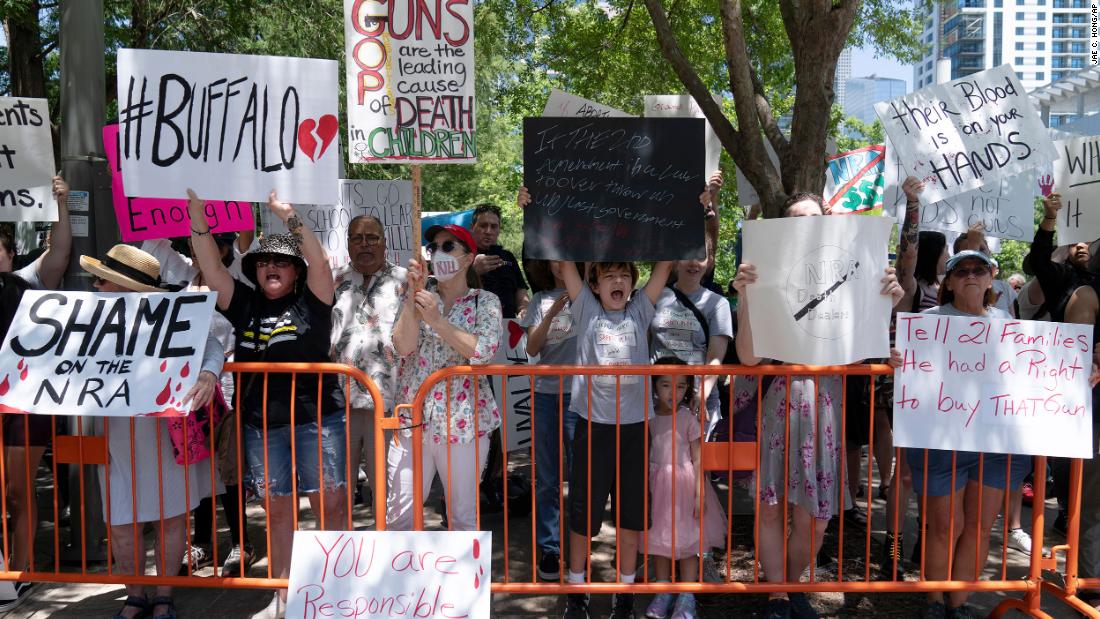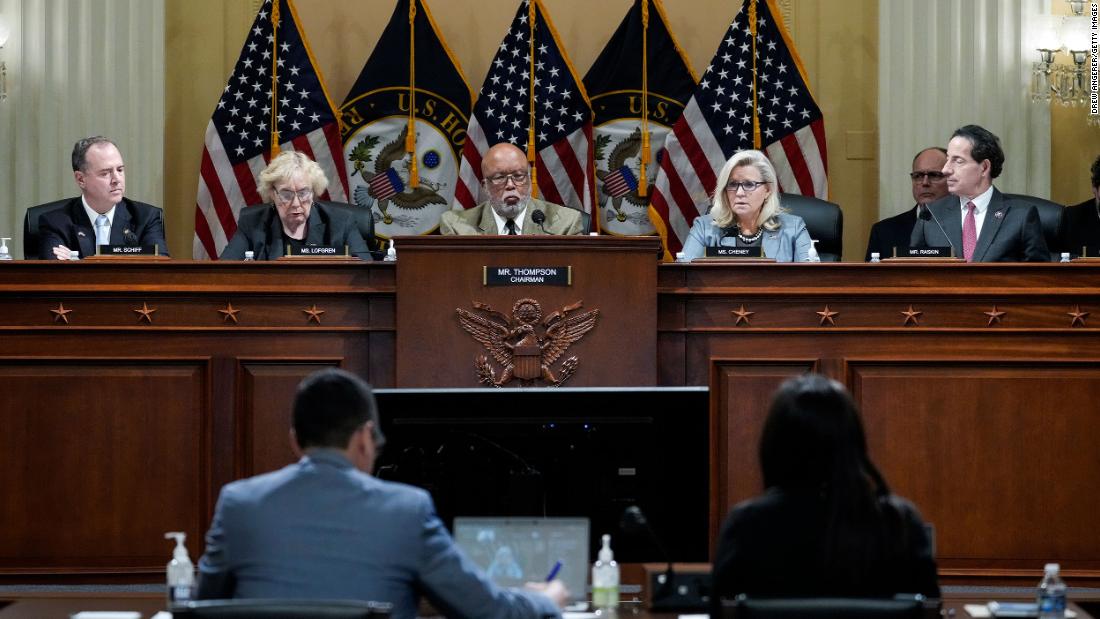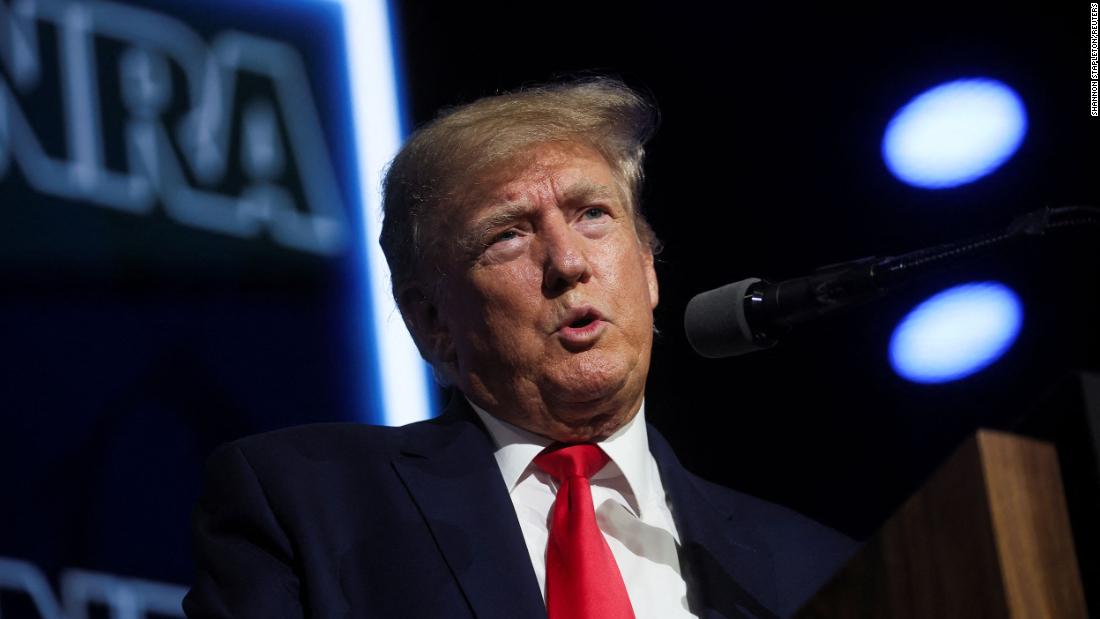Some Americans took that as an exciting promise; others took it as more of a threat. Either way, Trump is, indeed, back.
There is a strong possibility that Trump will win his party's nomination should he run again, which seems as likely as warm weather at Mar-a-Lago this summer.
Also, should he be nominated, Trump could even win the general election since
only 39% of Americans approve of President Joe Biden's performance in office, according to an Associated Press-NORC Center for Public Research poll released earlier this month.
Given Trump's dominance of the GOP going into 2024, it's a propitious moment to assess his failures and successes as commander in chief, which I attempt to do in my book, "The Cost of Chaos, The Trump Administration and the World."
Trump has the distinction of being the
only US president who publicly and consistently refused to accept his electoral loss. His lies about the 2020 election have poisoned America's politics for the foreseeable future, as Trump has made signing on to those lies a de facto litmus test for many Republican candidates running for office.
Meanwhile, the bravery of the Ukrainians now fighting the Russians underlines the idiocy of
Trump's embrace of Russian President Vladimir Putin and also of his efforts to
hold back military aid to the Ukrainians.
And when Trump was confronted by a real crisis -- the Covid-19 pandemic -- he largely
embraced wishful thinking and quackery over any real leadership of the nation, resulting in much unnecessary further suffering.
But before examining in more detail Trump's many failures as President, it's worth stipulating that Trump also had some successes.
What Trump got right
Trump got one big foreign policy issue mostly right, which was China. While the United States was distracted by its post-9/11 wars, China made great advances economically and militarily -- in part, by stealing American secrets through
cyber espionage.
The Trump administration correctly identified China as a strategic US rival. This was an important conceptual shift because previous administrations had emphasized US engagement with the Chinese, believing that they would play by the rules of the international system and liberalize their economy and then, as they prospered, they would also liberalize their authoritarian form of governance. As it turned out, that was a fantasy that the Trump administration correctly called out.
Trump's 2017 national security strategy
asserted that the Chinese were "building the most capable and well-funded military in the world, after our own." The Trump strategy also warned that Chinese "land reclamation projects and militarization of the South China Sea flouts international law, threatens the free flow of trade, and undermines stability." As a result,
the Trump administration authorized at least double the number of US Navy ships transiting the South China Sea performing "freedom of navigation" exercises.
Also, the Trump administration's "Operation Warp Speed" saved many lives during the pandemic. Under it,
the US invested $2.5 billion in Moderna, which produced a testable vaccine on humans in only two months using novel mRNA technology. Pfizer and German biotech firm BioNTech didn't take US government funding, but the
government placed a $1.95 billion order for 100 million doses, and in doing so guaranteed demand for its vaccine. After the first clinical trials, both Pfizer/BioNTech and Moderna produced vaccines that were
more than 90% effective, an efficacy that eventually waned. These were astonishing results given that the US Food and Drug Administration had
put its threshold for approval for any vaccine at 50% effective or above.
Trump also presided over the destruction of the ISIS geographical "caliphate" in Iraq and Syria. Trump was largely following the battle plan that the administration of President Barack Obama had waged to defeat ISIS, but it was during Trump's presidency that
ISIS was finally defeated. And
Trump ordered the Special Operations raid in 2019 during which Abu Bakr al-Baghdadi, the founder of ISIS, died.
The worst deals
But so many other of Trump's actions as commander in chief were spectacular failures. The
seizure of Afghanistan by the Taliban last year was one of Trump's most disastrous foreign policy legacies. Biden certainly deserves blame for claiming that he was bound by Trump's 2020 "peace" deal with the Taliban, which really was a "
surrender agreement" to the Taliban in the mordant words of H.R. McMaster, Trump's former national security adviser. And Biden also deserves blame for the
botched execution of the US withdrawal from Afghanistan last summer.
But it was Trump, not Biden, who had laid the groundwork for the Taliban takeover of Afghanistan. In 2018
Trump authorized his secretary of state, Mike Pompeo, to begin negotiations with the Taliban, an effort that was
led by US Ambassador Zalmay Khalilzad.
Khalilzad
made an agreement with the Taliban that, in exchange for a total US withdrawal from Afghanistan, they would break with al-Qaeda and engage in genuine peace talks with the Afghan government. The Taliban simply ignored those agreements.
Trump often asserted he was as a
great deal maker, but his administration's agreement with the Taliban was one of the worst deals in American diplomatic history. The Taliban received everything that they wanted without offering anything substantive in return, other than an agreement not to attack US forces as they withdrew from Afghanistan. Since the Taliban's main goal in their negotiations with the US was a total American withdrawal, this was an easy concession for the Taliban to make.
And so it went with many other of Trump's foreign policy initiatives. He apparently believed that by dint of his personal charm he could persuade the North Korean dictator, Kim Jong Un, to
give up his nuclear weapons. American Presidents going back to Bill Clinton
had tried to persuade the nuclear-armed hermit state to rein in its nuclear weapons program, and all of them had failed.
While he was President, Trump met with Kim three times,
first in Singapore in 2018, a year later in
Hanoi and then
at the border between North and South Korea. Those meetings generated intense media frenzies and gave Kim and the US President equal billing on the world stage, which was a huge coup for the dictator of a country whose
GDP was around the size of the state of
Vermont.
At the Singapore meeting, Trump unilaterally gave a key concession to Kim -- canceling joint US-South Korea military exercises, which were a longtime cornerstone of containing the North Korean rogue state -- and got nothing in return. Trump and Kim also exchanged 27 letters, some of which had the ardent tone of suitors writing each other. Trump publicly described the missives as "
love letters."
Yet, these summits and exchanges of letters yielded nothing. While Trump was in office the North Koreans continued producing fissile material and
tested short range ballistic missiles in contravention of UN Security Council prohibitions. They also
developed hard-to-detect submarine-launched missiles.
Trump's efforts to constrain North Korea's nuclear program failed, while his erratic diplomacy encouraged Iran's nuclear ambitions. Trump regularly castigated Obama's 2015 nuclear agreement with the Iranians as the "
worst deal ever."
But unlike Trump's peace agreement with the Taliban, the Iranians were observing their end of the nuclear deal. Trump's own intelligence agencies concluded that the Iranians were
adhering to the terms of the 2015 deal. Yet, Trump was determined to get out of Obama's Iran agreement, which he did in 2018.
As a result, by the time Trump left office in January 2021, the Iranians were planning to enrich uranium up to 20% purity, far above the 4% purity agreed to in their deal with the Obama administration,
according to the International Atomic Energy Agency. While this was well short of the 90% purity needed for a nuclear bomb, the Iranian nuclear program took a large step forward as a result of Trump's ham-handed approach to the Iranians.
Undermining NATO
Throughout his presidency, Trump embraced Putin, while regularly taking pot shots at key American allies such as the
British,
French and
Germans. What was the strategic benefit to the US of all this geopolitical trumpery? It was never clear, although it was certainly a key aim of Putin's to weaken the NATO alliance, which Trump's own Defense Secretary, Jim Mattis, described as
the most successful alliance in modern history.
The importance of that alliance was underlined when
Russia invaded Ukraine in February. The Ukrainian military, trained by NATO advisers, imposed huge costs on the Russian invaders, and the Biden administration together with its NATO allies
transferred large numbers of anti-tank and anti-aircraft weapons to the Ukrainians.
Undermining democracy
Trump's affinity with dictators overseas -- a key part of his foreign policy -- dovetailed with his attempts to undermine democratic processes and norms at home, best exemplified by his continued refusal to accede to the will of the people in the 2020 presidential election and his support for his followers, who stormed the US Capitol days before Biden's inauguration.
Trump's antidemocratic stance -- which he still promotes with the "Big Lie" conspiracy theory -- has poisoned American politics.
In part because of Trump's anti-democratic tendencies, during his presidency current and former senior military leaders issued
more than 250 public statements that were critical of Trump's leadership, according to a tally by New America, the research institution where I serve as a vice president.
This was unprecedented, as military leaders, both those in uniform and in retirement, generally stay out of politics. Following the murder of George Floyd by a police officer in Minneapolis on May 25, 2020, Trump
threatened to send the federal military to quell the unrest that was roiling American cities. On a call about the protests with the nation's governors on June 1,
Trump told them, "If you don't dominate, you're wasting your time. They're going to run all over you, you'll look like a bunch of jerks."
Later that evening protesters gathered outside the White House and were met with violence when Trump walked to St. John's Episcopal Church wielding a Bible, which resulted in a
now-infamous photo op.
Mattis
broke his long silence about Trump, issuing a blistering statement: "Donald Trump is the first president in my lifetime who does not try to unite the American people -- does not even pretend to try. Instead, he tries to divide us. We are witnessing the consequences of three years of this deliberate effort."
The events of January 6, 2021, further turned the leaders of the US military against Trump. On that day a crowd of many thousands of his supporters gathered outside the White House -- some wearing body armor and many wearing quasi-military outfits. To the assembled crowd Trump spouted a geyser of baseless conspiracy theories about his loss in the presidential election. Trump then urged them to go to the Capitol.
A mob then assaulted the building.
That evening, Trump was unrepentant about the mayhem he had helped to foment, tweeting: "These are the things and events that happen when a sacred landslide election victory is so unceremoniously & viciously stripped away from great patriots who have been badly & unfairly treated for so long. Go home with love & in peace. Remember this day forever!" This tweet was later deleted. Twitter then
suspended Trump from its platform.
The service chiefs of all the branches of the military -- led by the Chairman of the Joint Chiefs, General Mark Milley -- took the extraordinary measure of sending a
joint letter to the 2 million members of the active-duty, National Guard and Reserve units of the US military decrying the insurrection and confirming that "President-elect Biden will be inaugurated and will become our 46th Commander in Chief."
The message was clear: The US military would not be assisting Trump in any of his efforts to mount a coup against the Constitution they had sworn an oath to serve.
The assault on the Capitol triggered Trump's second impeachment trial. He was
once again acquitted by the Senate, but he now had the distinction of being the
only American President to be impeached twice.
The Covid disaster
It was, above all, in his mishandling of the Covid-19 pandemic that Trump revealed his many weaknesses as a leader. First, he never did any homework, meaning his understanding of complex issues, such as how best to mitigate a pandemic, was always cartoonish. Related to Trump's first failing was his second: He always believed he knew more than the experts about any given subject. Third, Trump always trusted his own gut. This was not likely to produce relevant knowledge or coherent policy. And it didn't.
Trump had a lot to say publicly about the coronavirus, a great deal of it misleading or simply false, and he also modeled and even encouraged irresponsible behavior.
Before effective vaccines, there were two tools that worked to stop the spread of the virus; they were social distancing and wearing a mask in public. Trump
denigrated mask-wearing and he also
hosted events at the White House with large numbers of attendees socializing without masks, such as the celebration of Amy Coney Barrett's nomination to the Supreme Court on October 26, 2020.
As Americans first became aware of the threat from the coronavirus, Trump said on February 26, 2020, that cases of the virus would go down to zero "
within a couple of days." He also
wrongfully claimed that the coronavirus was no more dangerous than the seasonal flu.
In the first phase of the pandemic, the federal government abdicated its role by not issuing a national shutdown order and a mandate to wear masks. In late April 2020, Trump
suggested that injecting bleach might prove to be a treatment for the virus. A month later Trump said that hydroxychloroquine, an anti-malarial drug, was likely a "
game changer." In June 2020, the
FDA revoked "emergency use" of chloroquine and hydroxychloroquine for Covid-19 patients because it could cause heart problems.
Even when Trump had the chance to make a public statement that really might have made a difference to the scope of the pandemic, he failed to do so. He and his wife, Melania Trump, were vaccinated at the White House during the closing days of his presidency. Any leader with the slightest regard for his own people would have allowed the media to cover this event, especially given the prevalence of vaccine hesitancy in the country. Trump
chose instead to be vaccinated in secret.
His weak leadership produced grave results:
More than 400,000 Americans died from Covid-19 during Trump's final year in office, which was more than the death toll of all the Americans who had died in wars going back to World War II. Many of those deaths could have been avoided with better leadership; Covid mortality in the US was
40% higher than the average of other advanced nations such as Canada, France, Germany, Italy, Japan and the United Kingdom, according to a report from the medical journal The Lancet.
Dr. Deborah Birx, Trump's coronavirus response coordinator,
told a congressional committee in October that "we probably could have decreased fatalities into the 30-percent-less to 40-percent-less range."
The first duty of the commander in chief is the protection of US citizens, and Trump clearly was derelict in this duty. In short, Trump was the most incompetent President in modern American history.






:quality(70)/cloudfront-us-east-1.images.arcpublishing.com/adn/I3FRLEZCBD3KMWBIBKVW47W6XY.jpg)

